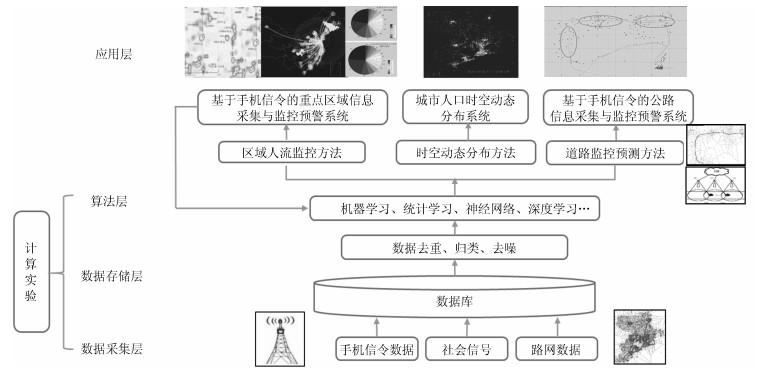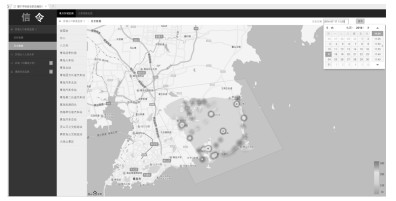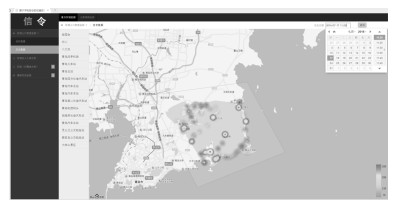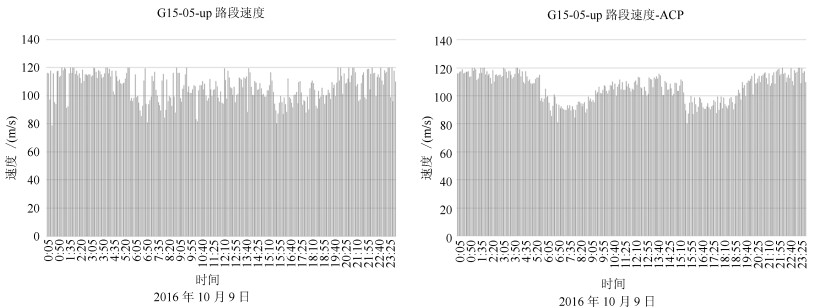-
摘要: 随着交通拥堵和公共安全问题的日趋严重,传统方案在道路监测和区域监测方面不仅成本高,准确性和可靠性也无法保证,因此无法给用户提供一整套综合全面的出行路线规划及旅游目的地选择等方面的相关指导.本文提出基于ACP方法的平行手机信令数据分析系统,将解决上述问题.本文主要基于ACP方法,包括人工社会、计算实验和平行执行,构建基于手机信令的人工监控场景和实际监控场景.实际监控场景和人工监控场景平行执行,人工监控场景用来模拟和实验复杂的实际监控场景,通过大量计算实验,进行各种模型的训练与评估,通过平行执行不断地更新和优化,实时指导实际监控场景;同时实际监控场景将结果反馈给人工监控场景,对人工监控场景模型进行修正.通过实际监控场景和人工监控场景之间的不断优化,可有效提高手机信令系统的实时性、准确性和可靠性,并最终满足不断增长的实时用户需求,保证用户出行的舒适性及安全性.Abstract: The issue of traffic congestion and public security is becoming more and more important. Traditional solutions are not only high cost in terms of road monitoring and regional monitoring, but also the accuracy and reliability can not be guaranteed. Thus, the traditional solutions can not provide users comprehensive guidance about the travel route planning and travel destination selection and other related guidance. This paper proposes a mobile phone signaling data analysis system based on the ACP approach to solve the aforementioned problems. The ACP approach includes artificial society, computational experiments and parallel execution which build artificial monitoring scene and actual monitoring scene based on mobile phone signaling. The actual monitoring scene and artificial monitoring scene are executed in parallel. Artificial monitoring scene is used to simulate and test the complex actual monitoring scene. Through a large number of computational experiments, various models are trained and evaluated; Artificial monitoring scene constantly updates, optimizes and guides the actual monitoring scene through parallel execution; The actual monitoring scene will feedback the results to the artificial monitoring scene, thus artificial monitoring scene model is continuously amended. The continuous optimization between the actual monitoring scene and artificial monitoring scene can effectively improves the real-time efficiency, accuracy and reliability of the mobile phone signaling system. The proposed system would meet the requirements of ever-increasing real-time, and ensure the comfort and safety for the travel of the users.
-
-
表 1 手机信令数据格式
Table 1 The structure of mobile phone signaling data
字段名称 描述 类型 标识号 唯一标识, 随机生成 TEXT, 加密 TimeStamp 时间戳 UINT32类型数字 LAC 位置区编号 UINT32类型数字 E 经度 UINT32类型数字 N 纬度 UINT32类型数字 EventID 事件类型 UINT8类型数字 号码归属地编码 号码归属地信息(省+市) 字符串数据类型(省-市) Type 基站类型0, 1 UINT32类型数字 表 2 道路基站与用户路径基站匹配表
Table 2 Mactching between base stations of road and user
Linkname Roadpoint Usertrajectory Match link-01 (120.346277, 36.231411) (120.341874, 36.241635) link-01 $\cdots$ $\cdots$ (120.291309, 36.236508) link-02 (120.160276, 36.243413) (120.280959, 36.235056) link-02 (120.152630, 36.234506) (120.239843, 36.231848) link-03 (120.145490, 36.246401) (120.239456, 36.231008) link-03 (120.136701, 36.239830) (120.178939, 36.241566) link-03 (120.123239, 36.235142) (120.160276, 36.243413) link-04 (120.072134, 36.222112) (120.136701, 36.239830) link-04 link-05 (120.072091, 36.215935) (120.123239, 36.235142) link-04 $\cdots$ $\cdots$ (120.072134, 36.222112) link-04 $\cdots$ $\cdots$ (120.064562, 36.232949) no link-06 (120.105853, 36.076972) (120.061622, 36.237668) no -
[1] 杨兆升.基础交通信息融合技术及其应用.北京:中国铁道出版社, 2005.Yang Zhao-Sheng. Basic Traffic Information Fusion Technology and Its Application. Beijing:China Railway Publishing House, 2005. [2] Xia M, Chen Y H, Huang H C, Wang X Y, Chen Y F. Environment-adaptive road traffic measurement with single wireless geomagnetic sensor node. In:Proceedings of the International Conference on Wireless Communication and Sensor Network (WCSN 2015). Changsha, China:World Scientific, 2016. 720-727 [3] 何兆成, 卢瑞琪, 聂佩林.基于浮动车定位数据的高速公路区间平均速度估计.公路交通科技, 2011, 28(6):128-135 doi: 10.3969/j.issn.1002-0268.2011.06.021He Zhao-Cheng, Lu Rui-Qi, Nie Pei-Lin. Estimation on freeway segment average speed based on probe vehicle data. Journal of Highway and Transportation Research and Development, 2011, 28(6):128-135 doi: 10.3969/j.issn.1002-0268.2011.06.021 [4] 刘俏.基于浮动车技术的城市道路网状况研究[硕士学位论文], 武汉理工大学, 中国, 2013.Liu Qiao. Studies on the condition of urban road networks based on floating car technology[Master dissertation], Wuhan University of Technology, China, 2013. [5] 曹艺华.面向视频监控的大尺度人群行为分析[硕士学位论文], 上海交通大学, 中国, 2013.Cao Yi-Hua. The large-scale crowd analysis in video surveillance[Master dissertation], Shanghai Jiao Tong University, China, 2013. [6] 肖坦, 杨栩, 李黄煌.基于视频监控的铁路客运站人群密度分析算法.铁道通信信号, 2010, 46(8):80-82 doi: 10.3969/j.issn.1000-7458.2010.08.029Xiao Tan, Yang Xu, Li Huang-Huang. Railway passenger station crowd density estimation algorithm based video surveillance. Railway Signalling & Communication, 2010, 46(8):80-82 doi: 10.3969/j.issn.1000-7458.2010.08.029 [7] Casas O, López M, Quílez M, Martinez-Farre X, Hornero G, Rovira C, Pinilla M R, RamosP M, Borges B, Marques H, Girão S. Wireless sensor network for smart composting monitoring and control. Measurement, 2014, 47:483-495 doi: 10.1016/j.measurement.2013.09.026 [8] 郑建湖, 王明华.动态交通信息采集技术比较分析.交通标准化, 2009, (4):42-47 http://d.old.wanfangdata.com.cn/Periodical/jtbzh200904045Zheng Jian-Hu, Wang Ming-Hua. Comparative analysis of collection technologies for dynamic traffic information. Transport Standardization, 2009, (4):42-47 http://d.old.wanfangdata.com.cn/Periodical/jtbzh200904045 [9] 李祖芬, 于雷, 高永, 吴亦政, 龚大鹏, 宋国华.基于手机信令定位数据的居民出行时空分布特征提取方法.交通运输研究, 2016, 2(1):51-57 http://d.old.wanfangdata.com.cn/Periodical/jtbzh201601008Li Zu-Fen, Yu Lei, Gao Yong, Wu Yi-Zheng, Gong Da-Peng, Song Guo-Hua. Extraction method of temporal and spatial characteristics of residents' trips based on cellular signaling data. Transportation Standardization, 2016, 2(1):51-57 http://d.old.wanfangdata.com.cn/Periodical/jtbzh201601008 [10] 唐小勇, 周涛, 陆百川.基于手机信令的大范围人流移动分析.重庆交通大学学报(自然科学版), 2017, 36(1):82-87, 109 http://d.old.wanfangdata.com.cn/Periodical/cqjtxyxb201701015Tang Xiao-Yong, Zhou Tao, Lu Bai-Chuan. Analysis of wide range population flow analysis based on mobile phone signaling. Journal of Chongqing Jiaotong University (Natural Science), 2017, 36(1):82-87, 109 http://d.old.wanfangdata.com.cn/Periodical/cqjtxyxb201701015 [11] 吴松, 雒江涛, 周云峰, 林举厅, 舒忠玲.基于移动网络信令数据的实时人流量统计方法.计算机应用研究, 2014, 31(3):776-779 doi: 10.3969/j.issn.1001-3695.2014.03.033Wu Song, Luo Jiang-Tao, Zhou Yun-Feng, Lin Ju-Ting, Shu Zhong-Ling. Method of real-time traffic statistics using mobile network signaling. Application Research of Computers, 2014, 31(3):776-779 doi: 10.3969/j.issn.1001-3695.2014.03.033 [12] Hellinga B, Fu L P, Takada H. Obtaining traveller information via mobile phone location referencing-challenges and opportunities. In: Proceedings of the Annual Conference of the Transportation Association of Canada. St. John's, Canada: National Academy of Sciences, 2003. 21-24 [13] White J, Quick J, Philippou P. The use of mobile phone location data for traffic information. In: Proceedings of the 12th IEE International Conference on Road Transport Information and Control. London, UK: IEEE, 2004. 321-325 [14] Rose G. Mobile phones as traffic probes:practices, prospects and issues. Transport Reviews, 2006, 26(3):275-291 doi: 10.1080/01441640500361108 [15] Qiu Z J, Cheng P. State of the art and practice: cellular probe technology applied in advanced traveler information system. In: Transportation Research Board 86th Annual Meeting (TRB2007). Washington DC, USA: Transportation Research Board. 2007. [16] Caceres N, Wideberg J P, Benitez F G. Review of traffic data estimations extracted from cellular networks. IET Intelligent Transport Systems, 2008, 2(3):179-192 doi: 10.1049/iet-its:20080003 [17] Valerio D. Road Traffic Information from Cellular Network Signaling, Technical Report FTW-TR-2009-003, Telecommunications Research Center Vienna, Austria, 2009. [18] 郭晓妮.基于手机信令的交通流监测与出行信息服务系统.通讯世界, 2017, (14):157 doi: 10.3969/j.issn.1006-4222.2017.14.112Guo Xiao-Ni. Traffic flow monitoring and travel information service system based on mobile phone signaling. Telecom World, 2017, (14):157 doi: 10.3969/j.issn.1006-4222.2017.14.112 [19] 陈欢.基于手机信令数据的人员出行特征跟踪调查.交通与运输, 2017, (S1):92-94, 98 http://d.old.wanfangdata.com.cn/Periodical/jtyys2017z1022Chen Huan. Survey of pedestrian travel characteristics based on mobile phone signaling data. Traffic & Transportation, 2017, (S1):92-94, 98 http://d.old.wanfangdata.com.cn/Periodical/jtyys2017z1022 [20] Wang F Y. Parallel control and management for intelligent transportation systems:concepts, architectures, and applications. IEEE Transactions on Intelligent Transportation Systems, 2010, 11(3):630-638 [21] 王飞跃.平行系统方法与复杂系统的管理和控制.控制与决策, 2004, 19(5):485-489, 514 doi: 10.3321/j.issn:1001-0920.2004.05.002Wang Fei-Yue. Parallel system methods for management and control of complex systems. Control and Decision, 2004, 19(5):485-489, 514 doi: 10.3321/j.issn:1001-0920.2004.05.002 [22] 王飞跃.人工社会、计算实验、平行系统——关于复杂社会经济系统计算研究的讨论.复杂系统与复杂性科学, 2004, 1(4):25-35 doi: 10.3969/j.issn.1672-3813.2004.04.002Wang Fei-Yue. Artificial societies, computational experiments, and parallel systems:a discussion on computational theory of complex social-economic systems. Complex Systems and Complexity Science, 2004, 1(4):25-35 doi: 10.3969/j.issn.1672-3813.2004.04.002 [23] 王飞跃.计算实验方法与复杂系统行为分析和决策评估.系统仿真学报, 2004, 16(5):893-897 doi: 10.3969/j.issn.1004-731X.2004.05.009Wang Fei-Yue. Computational experiments for behavior analysis and decision evaluation of complex systems. Journal of System Simulation, 2004, 16(5):893-897 doi: 10.3969/j.issn.1004-731X.2004.05.009 [24] 王飞跃.关于复杂系统研究的计算理论与方法.中国基础科学, 2004, 6(5):3-10 doi: 10.3969/j.issn.1009-2412.2004.05.001Wang Fei-Yue. Computational theory and method on complex system. China Basic Science, 2004, 6(5):3-10 doi: 10.3969/j.issn.1009-2412.2004.05.001 [25] Zhang N, Wang F Y, Zhu F H, Zhao D B, Tang S M. DynaCAS:computational experiments and decision support for ITS. IEEE Intelligent Systems, 2008, 23(6):19-23 doi: 10.1109/MIS.2008.101 [26] 王飞跃, 刘德荣, 熊刚, 程长建, 赵冬斌.复杂系统的平行控制理论及应用.复杂系统与复杂性科学, 2012, 9(3):1-12 doi: 10.3969/j.issn.1672-3813.2012.03.001Wang Fei-Yue, Liu De-Rong, Xiong Gong, Cheng Chang-Jian, Zhao Dong-Bin. Parallel control theory of complex systems and applications. Complex Systems and Complexity Science, 2012, 9(3):1-12 doi: 10.3969/j.issn.1672-3813.2012.03.001 [27] Wang F Y, Wang X, Li L X, Li L. Steps toward parallel intelligence. IEEE/CAA Journal of Automatica Sinica, 2016, 3(4):345-348 doi: 10.1109/JAS.2016.7510067 [28] Wang F Y, Yang L Q, Cheng X, Han S S, Yang J. Network softwarization and parallel networks:beyond software-defined networks. IEEE Network, 2016, 30(4):60-65 doi: 10.1109/MNET.2016.7513865 [29] 王飞跃, 杨柳青, 胡晓娅, 程翔, 韩双双, 杨坚.平行网络与网络软件化:一种新颖的网络架构.中国科学:信息科学, 2017, 47(7):811-831 http://www.cnki.com.cn/Article/CJFDTOTAL-PZKX201707001.htmWang Fei-Yue, Yang Liu-Qing, Hu Xiao-Ya, Cheng Xiang, Han Shuang-Shuang, Yang Jian. Parallel networks and network softwarization:a novel network architecture. Scientia Sinica (Informationis), 2017, 47(7):811-831 http://www.cnki.com.cn/Article/CJFDTOTAL-PZKX201707001.htm [30] 李力, 林懿伦, 曹东璞, 郑南宁, 王飞跃.平行学习——机器学习的一个新型理论框架.自动化学报, 2017, 43(1):1-8 doi: 10.3969/j.issn.1003-8930.2017.01.001Li Li, Lin Yi-Lun, Cao Dong-Pu, Zheng Nan-Ning, Wang Fei-Yue. Parallel learning——a new framework for machine learning. Acta Automatica Sinica, 2017, 43(1):1-8 doi: 10.3969/j.issn.1003-8930.2017.01.001 [31] Lv Y S, Duan Y J, Kang W W, Li Z X, Wang F Y. Traffic flow prediction with big data:a deep learning approach. IEEE Transactions on Intelligent Transportation Systems, 2015, 16(2):865-873 [32] Wen J, Zhao J L, Luo S W, Han Z. The improvements of BP neural network learning algorithm. In: Proceedings of the 5th International Conference on Signal Processing. Beijing, China: IEEE, 2000, 3: 1647-1649 期刊类型引用(5)
1. 赵金成. 基于大数据分析的智能交通管理与安全监测系统研究. 信息与电脑(理论版). 2023(23): 106-108 .  百度学术
百度学术2. 王洋,董雪婷. 大数据在轨道交通客流预测中的应用——以芜湖市交通需求预测为例. 铁道勘察. 2022(05): 125-131+136 .  百度学术
百度学术3. 郑荣,王晓宇,张艺源. 基于ACP理论的企业竞争情报智能系统构建研究. 情报理论与实践. 2021(12): 148-157 .  百度学术
百度学术4. 杨林瑶,陈思远,王晓,张俊,王成红. 数字孪生与平行系统:发展现状、对比及展望. 自动化学报. 2019(11): 2001-2031 .  本站查看
本站查看5. 侯国莲,弓林娟,苏烨,唐耀华. 基于ACP的平行发电控制系统. 智能科学与技术学报. 2019(03): 269-279 .  百度学术
百度学术其他类型引用(5)
-






 下载:
下载:








